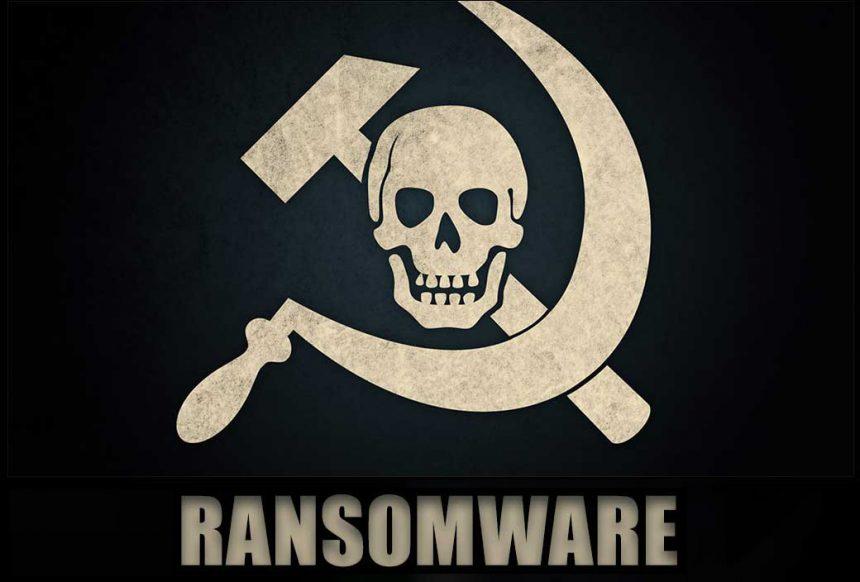RdpLocker is a sophisticated form of ransomware that targets personal and business data by encrypting files and demanding a ransom in exchange for a decryption key. It belongs to the growing family of ransomware that continues to evolve in complexity and stealth. This particular strain uses intermittent encryption to target large amounts of data quickly, making it harder for users to detect the attack in its early stages.
RdpLocker is notorious for its use of the “.rdplocker” extension, which it appends to encrypted files. When a victim’s files are infected, they are no longer accessible unless the ransom is paid, which makes it a dangerous threat to both individuals and organizations.
How Does RdpLocker Work?
Upon infection, RdpLocker immediately begins encrypting files on the infected system, targeting various file types including documents, images, and videos. The encrypted files are renamed with the “.rdplocker” extension (e.g., “document.jpg” becomes “document.jpg.rdplocker”). This renders the files inaccessible without a decryption key.
One of the most alarming features of RdpLocker is its use of “intermittent encryption.” This technique allows the malware to encrypt large volumes of data in a short amount of time, potentially causing significant damage before the victim even notices the infection. The malware encrypts files in phases, which makes it harder to identify using traditional security methods.
After encrypting the files, RdpLocker changes the victim’s desktop wallpaper and drops a ransom note titled “Readme.txt.” The ransom note provides instructions on how to contact the attackers and demands payment for the decryption key.
Remove annoying malware threats like this one in seconds!
Scan Your Computer for Free with SpyHunter
Download SpyHunter now, and scan your computer for this and other cybersecurity threats for free!
The Ransom Note: What Victims Need to Know
The “Readme.txt” ransom note is a critical element of the RdpLocker attack. It informs the victim that a unique public and private key has been generated for their system, and that these keys are required to decrypt the locked files. To obtain the decryption key, the victim must contact the attackers via the email address rlocked@protonmail.com and pay a ransom.
The ransom note also includes threats to publish the victim’s files and permanently encrypt them if payment is not made within 48 hours. This time frame intensifies the urgency for victims to make a decision about whether to comply with the attackers’ demands.
Here is an excerpt from the ransom note:
--- RdpLocker ---
Introducing RdpLocker, the cutting-edge solution for intermittent encryption.
With intermittent encryption, it is undetectable and can encrypt terabytes of data
in just a few minutes.
With our encryption service, a unique public and private key is generated exclusively for you.
In order to decrypt your files, you must pay for the decryption key and application.
You can do so by contacting us at
rlocked@protonmail.com
If the payment is not made in the next 48 hours, we will publish the information taken and your files will remain permanently encrypted.The Ransom Payment: Is It Worth It?
Victims are often faced with the difficult decision of whether to pay the ransom. However, it is essential to understand that paying the ransom does not guarantee the decryption of files. Cybercriminals may take the victim’s money and never provide the decryption key. Moreover, there is no assurance that the attackers will not return with another ransom demand in the future.
Experts strongly advise against paying the ransom, as it only funds further criminal activities and encourages the attackers to continue their malicious behavior. Instead, victims should focus on ransomware removal and file recovery methods that do not involve interacting with the attackers.
How to Remove RdpLocker
Remove annoying malware threats like this one in seconds!
Scan Your Computer for Free with SpyHunter
Download SpyHunter now, and scan your computer for this and other cybersecurity threats for free!
Removing RdpLocker ransomware from your system is a critical step to preventing further damage. Here’s a step-by-step guide on how to effectively remove this malware using SpyHunter:
- Disconnect from the Network: As soon as you suspect your system is infected with RdpLocker, disconnect it from the internet and any local networks. This will prevent the ransomware from spreading to other devices on your network.
- Boot into Safe Mode: Boot your computer into Safe Mode with Networking. This will prevent RdpLocker from running while you perform the necessary removal steps.
- Install SpyHunter: Download and install SpyHunter, a reputable anti-malware program designed to detect and remove ransomware like RdpLocker. Ensure you are downloading it from the official website to avoid installing fake or malicious software.
- Scan for Malware: Run a full system scan using SpyHunter. The software will detect and identify any malware present on your system, including RdpLocker. SpyHunter uses advanced algorithms to scan for ransomware and other types of malware.
- Remove Detected Threats: Once the scan is complete, SpyHunter will provide a list of detected threats. Review the results and allow SpyHunter to remove any malware it has found, including RdpLocker.
- Restore Files from Backup (if available): After the ransomware is removed, you can attempt to restore your files from a backup. If you do not have a backup, you may need to rely on professional data recovery services, though there is no guarantee they can decrypt the files.
- Change Your Passwords: Since some ransomware strains, including RdpLocker, may install additional trojans or keyloggers, it’s important to change your passwords for all accounts accessed on the infected device.
- Update Your Software: Ensure that your operating system and all software are up to date. This will help close any vulnerabilities that ransomware could exploit in the future.
Preventive Measures to Avoid Future Infections
The best way to avoid falling victim to ransomware like RdpLocker is to take preventive measures. Here are some steps you can take to protect your data:
- Regular Backups: Regularly back up your important files to an external drive or cloud storage service. If your files are encrypted by ransomware, you can restore them from a backup instead of paying the ransom.
- Use Reliable Security Software: Keep an up-to-date antivirus program running on your computer. Antivirus software like SpyHunter can help detect ransomware before it encrypts your files.
- Avoid Suspicious Emails and Attachments: Be cautious when opening email attachments or clicking links in unsolicited emails. Cybercriminals often distribute ransomware through phishing emails that contain malicious attachments or links.
- Update Software Regularly: Keep your operating system, software, and applications updated with the latest security patches. Attackers often exploit known vulnerabilities to spread ransomware.
- Educate Yourself and Your Employees: If you’re running a business, educate employees about the dangers of ransomware and the importance of not opening suspicious emails or downloading unverified software.
- Use a Firewall: A firewall can help prevent ransomware from communicating with its command-and-control server, blocking data exfiltration attempts.
Conclusion
RdpLocker is a dangerous form of ransomware that uses intermittent encryption to encrypt files quickly and effectively, making it harder for victims to notice until it’s too late. However, by taking immediate action, using reliable malware removal tools like SpyHunter, and implementing preventive measures, you can protect your data from future ransomware attacks.
Remember, never pay the ransom. It encourages the attackers and does not guarantee the return of your files. Instead, focus on removal, data recovery, and securing your system to prevent further infections.





